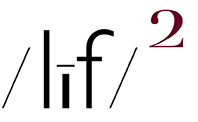THE NY TIMES HAS AN ONGOING SERIES CALLED The 10 Minute Challenge which challenges the reader to look, uninterrupted, at a single piece of art-to date, no photographs-for 10 minutes. During that time the viewer has the ability to zoom in/out in order to explore details. The viewer can stop at any time and a timer will let him/her know how long was spent viewing the picture. There is no penalty for not completing 10 minutes. Upon the termination of viewing, an art “expert” steps in and writes about/comments on the picture.
The commentary does yield up a few interesting bits and pieces, put they invariably veer off into art-school “lectures” which break down / disassemble the art piece into individual visual components in order to “explain” to the viewer how the art piece “works”. For the mechanically inclined, I guess this makes sense. For those who prefer the experience and sensations of viewing art, not so much.
An example of “experience and sensations” v. “mechanically inclined”: I would suggest that the difference can be explained by my approach to automobiles; the wife and I have 3 “drivers” cars; cars with exceptionally good handling-one has a track-tuned suspension-which means they handle the twisty bits at speed with composure and precision, aka: no fuss, no muss. They just drive and feel-the synchronous connection between car, driver, and the road-right. That written, I have very little interest in how, mechanically, it all comes together cuz I primarily care about the experience and sensations of driving those cars.
FYI, I especially enjoy, when driving the track-tuned car with my best friend as passenger, I can drive (literally) him through the twisty bits right up to edge of where the uninitiated tend to soil themselves.
Moving on, I accepted the 10 minute challenge for Edward Hopper’s painting, Manhattan Bridge Loop. and made it through to the 10 minute mark. While I did zoom in 2-3x to view a few details, I primarily viewed the piece in its entirety letting my eyes wander around the piece exploring various points of interest that caught my attention. I enjoyed my time with the painting. Time well spent, although, having spent time viewing a number of Hopper’s paintings-most notably Nighthawks-I can write that, staring at it on a screen is a far cry from seeing it on a wall.
Next up, I read the commentary which was complete with multiple images of the picture with the perfunctory lines and shapes drawn across/on its surface to…I don’t know…make sure that stupid people “understand” the picture and that painters use lines and shapes in constructing their work? I guess this annoys me so much cuz it‘s a kissing cousin to the advice you get from photo “experts” on the subject of how to “master” composition.
On the positive side, re: the commentary, it included these words from Mr. Hopper, himself:
Mr. Hopper wrote that he was primarily interested in the “vast field of experience and sensation. Form and color and structure were the tools he used to express those ideas….Why I select certain subjects rather than others, I do not exactly know, unless it is that I believe them to be the best mediums for a synthesis of my inner experience,….So much of every art is an expression of the subconscious, that it seems to me most all of the important qualities are put there unconsciously, and little of importance by the conscious intellect.…But these are things for the psychologist to untangle.
The highlighted part of Hopper’s words support, iMo, my belief that most of great art is created, not by thoughts, but by feelings. Think too much about it and yer gonna fuck it up. Ya gotta feel it when yer makin’ it. Loosen up and let it all hang out. If ya wanna think about it, think about it later.
It was Joel Meyerowitz who wrote:
“I connect to things in a visceral way…The camera is a reflex for me, it rises to my eye and opens up to take in that thing out there-sensation, feeling, cohesive elements that appear in front of me. It is a way of matching and absorbing the response I have to the world. It captures my consciousness and, later, this allows me to read my consciousness back like a text and understand my relationship to things or moments.”
In any event, if you have a subscription to the NY Times, I recommend the challenge. If not, why not click on one of my pictures and spend 10 minutes with it?


